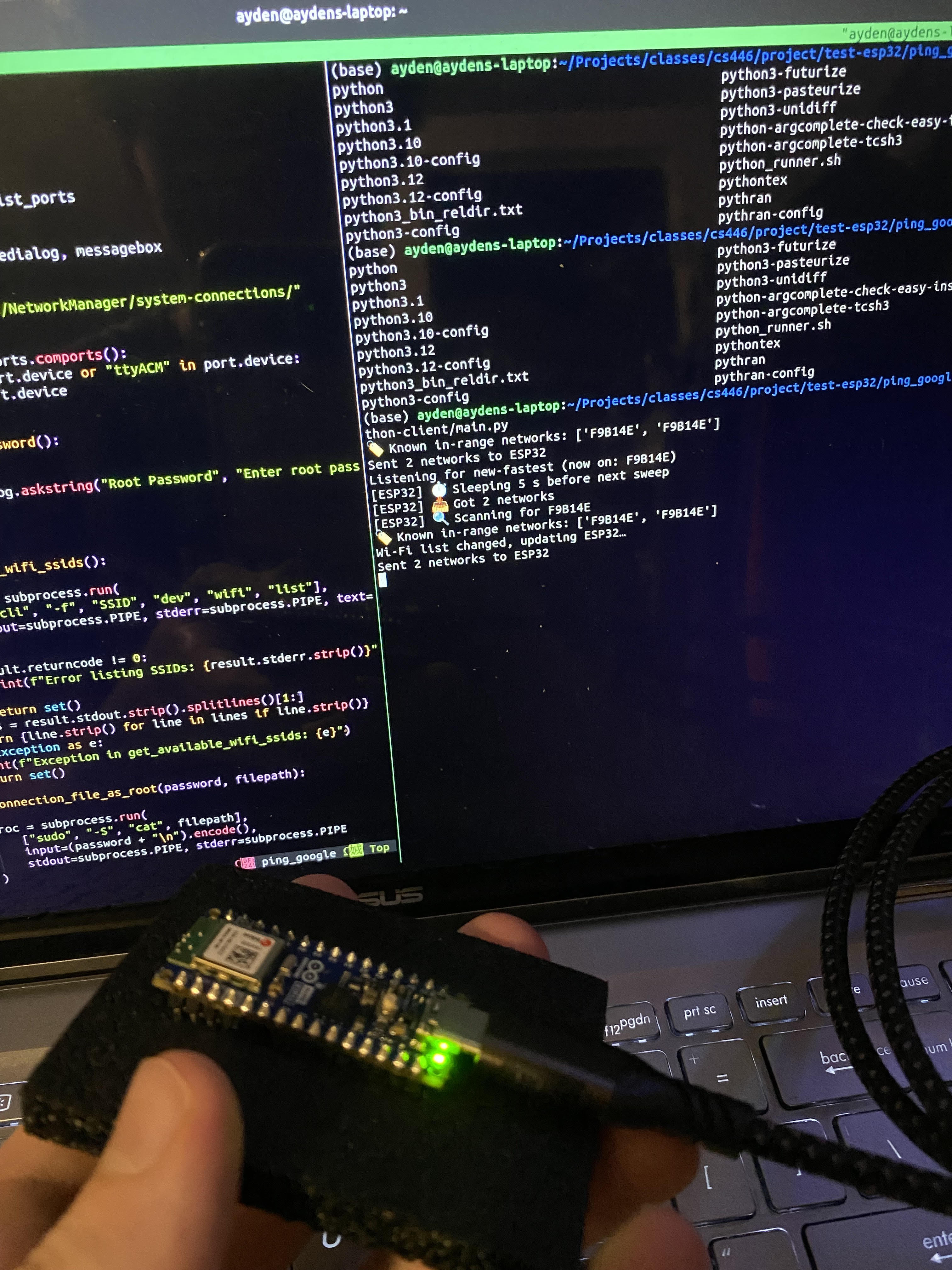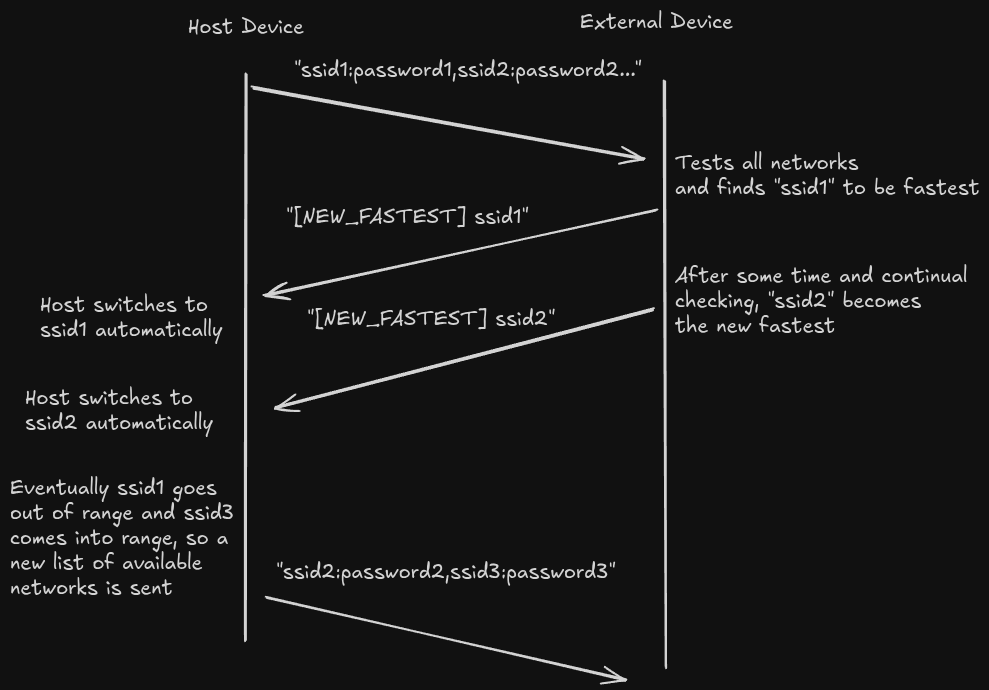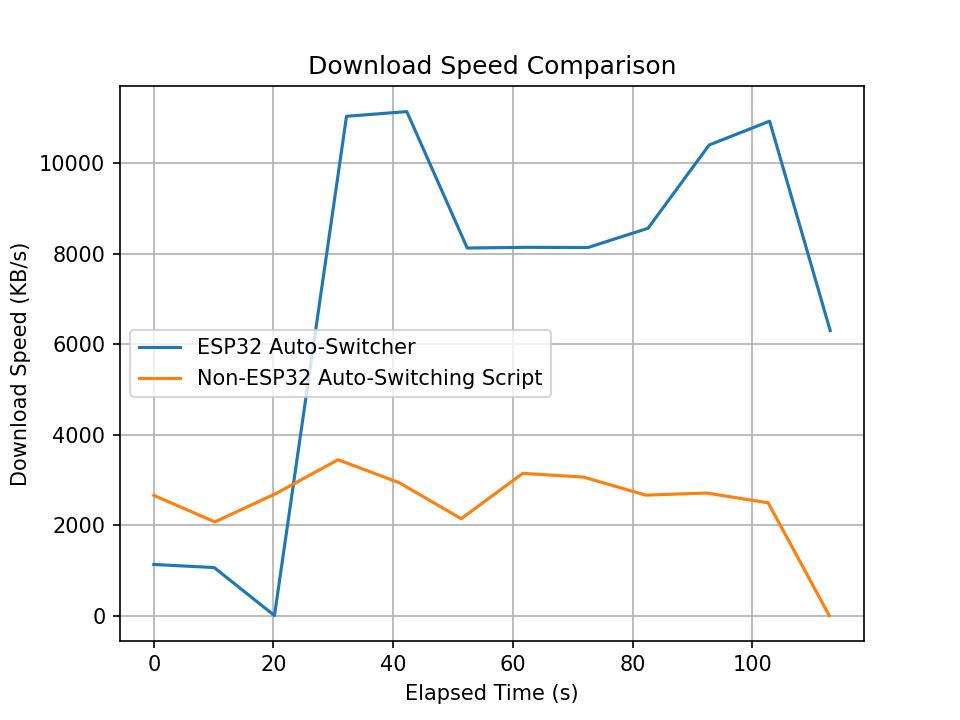ESP32 Autoswitcher for Bad Campus WiFi
When looking for a networking related problem to solve for my internetworking unversity course, I realized a major pain point for us specifically at our university— the WiFi sucks.
The thing is,
though, that there are three available wifi networks around campus, eduroam, UMB-Guest,
and Event-Guest. They don’t usually suck at the same time, but all of them periodically become
very slow. This means that you, the user, have to take a break from whatever internet-dependent
work you’re doing for a second and manually switch to one of the other options.
ESP32 to the rescue
ESP32s are pretty cheap and easy to use, and most importantly, they have a network card and can talk to PCs via USB. That means we can use the ESP32 as a second network card, totally dedicated to live-testing the WiFi throughput speed of available known networks!

But first, why can’t a laptop test all of the networks it’s own?
This was not immediately obvious to me. Investigating solutions to this problem, I found this Python script on Reddit that automatically switches to the available known network with the strongest WiFi signal, all in the background using NetworkManager.
Problem solved, right? Well, not exactly. It only switches based on signal strength and physical data rate— not WiFi throughput1. Especially given the fact that many, many people are connected to these campus networks at any given time, WiFi signal strength alone is probably not a good indicator of the upload and download speeds you’ll get when you’re actually on the network.
The constraint here is that to measure a network’s internet throughput, you need to be actively connected to it, and use something like speedtest.net to see how fast your end-to-end data transfer rates are. Since laptops only have one network card and network cards can only connect to one network at a time, you can’t live test the internet speed of other networks without disconnecting from your current one.
The solution
Here’s where the ESP32 comes in! The laptop will send over the list of available known networks while running, and the ESP32 will keep a map of each available network and its current speed. It will keep switching between the available networks and re-testing them, updating the map until a new fastest is found— at which point it will send a message and alert the host PC. The host PC will then switch to the new fastest network, all without the user doing anything manually.
 network diagram for this architecture, where “host device”=laptop and “external device”=esp32.
network diagram for this architecture, where “host device”=laptop and “external device”=esp32.
The implementation
Once we had a clear plan for our solution, we spent a few hours hacking away at this thing until we eventually had a working version, which totalled in around 300 lines of C++/Arduino and Python. The main test case was to connect to one of my university WiFi networks and then turn on my hotspot, which is faster than any of the university networks, at least during the afternoon. Without fail, the esp32 would iterate through the available networks, see that my hotspot was the new fastest known network, tell the laptop to conenct to it, and it would connect automagically(tm).
Testing
We tested our prototype by simulating the situation that it is designed to solve:
The network with the strongest WiFi signal and advertised max network speed is not the network with the fastest internet speed.
For the test, I had ChatGPT write a script to test the laptop’s download speed continuously over a period of 2 minutes and save the result to a json file. I ran our prototype for the first run of the test, and then the script from reddit that switches based on WiFi signal strength and max network speed for the second run. Here are the results:
 ChatGPT also helped with the matplotlib chart :)
ChatGPT also helped with the matplotlib chart :)
As you can see, the signal-based auto switcher stayed on the slower network, whereas the esp32 switcher identified the true fastest network and connected to it, resulting in up to 4x faster download speeds. Additionally, this chart demonstrates that there is relatively little downtime when switching between networks with our prototype.
Future ideas & contributing
Although we have a working prototype, there is still a laundry list of things that we could add to this device including:
- Support for Windows and Mac
- Support for WPA Enterprise (right now we only support WPA personal)
- Adding support for multiple ESP32s in parallel in order to test multiple networks at once
If you’re interested in trying it out or contributing, you can check out the project and give us a star on GitHub!
- NetworkManager’s
nmcliprovides the following info about wifi networks↩